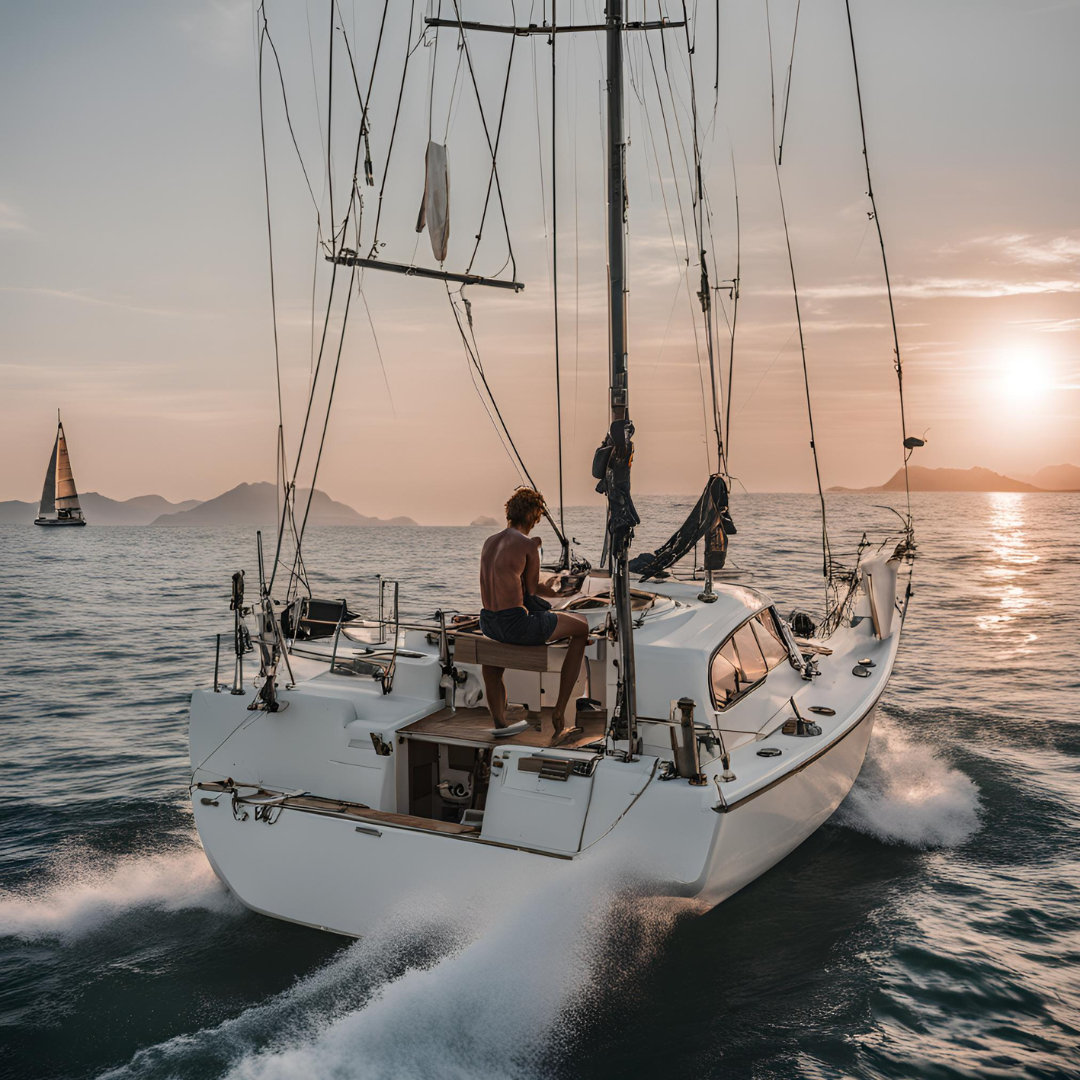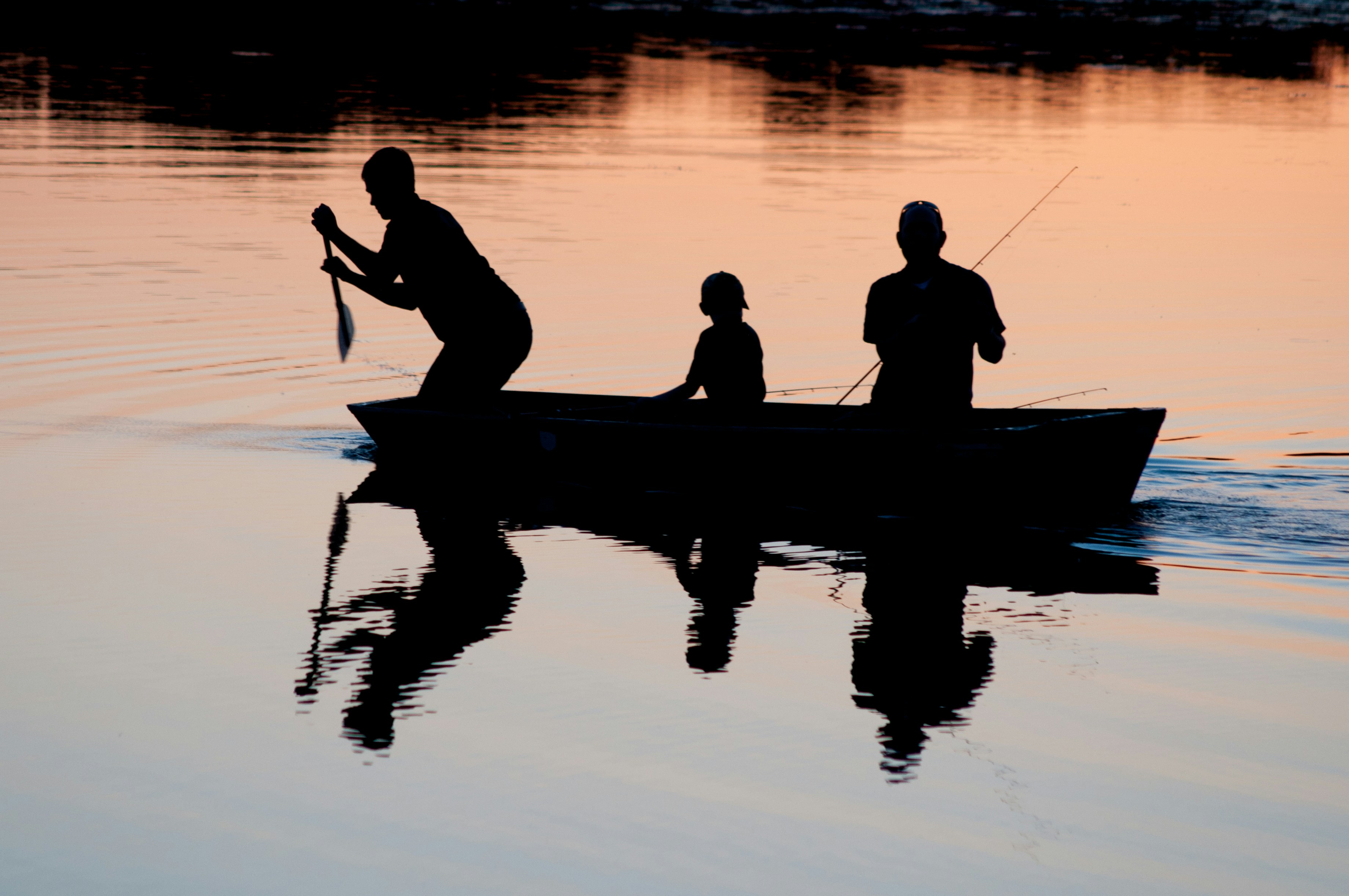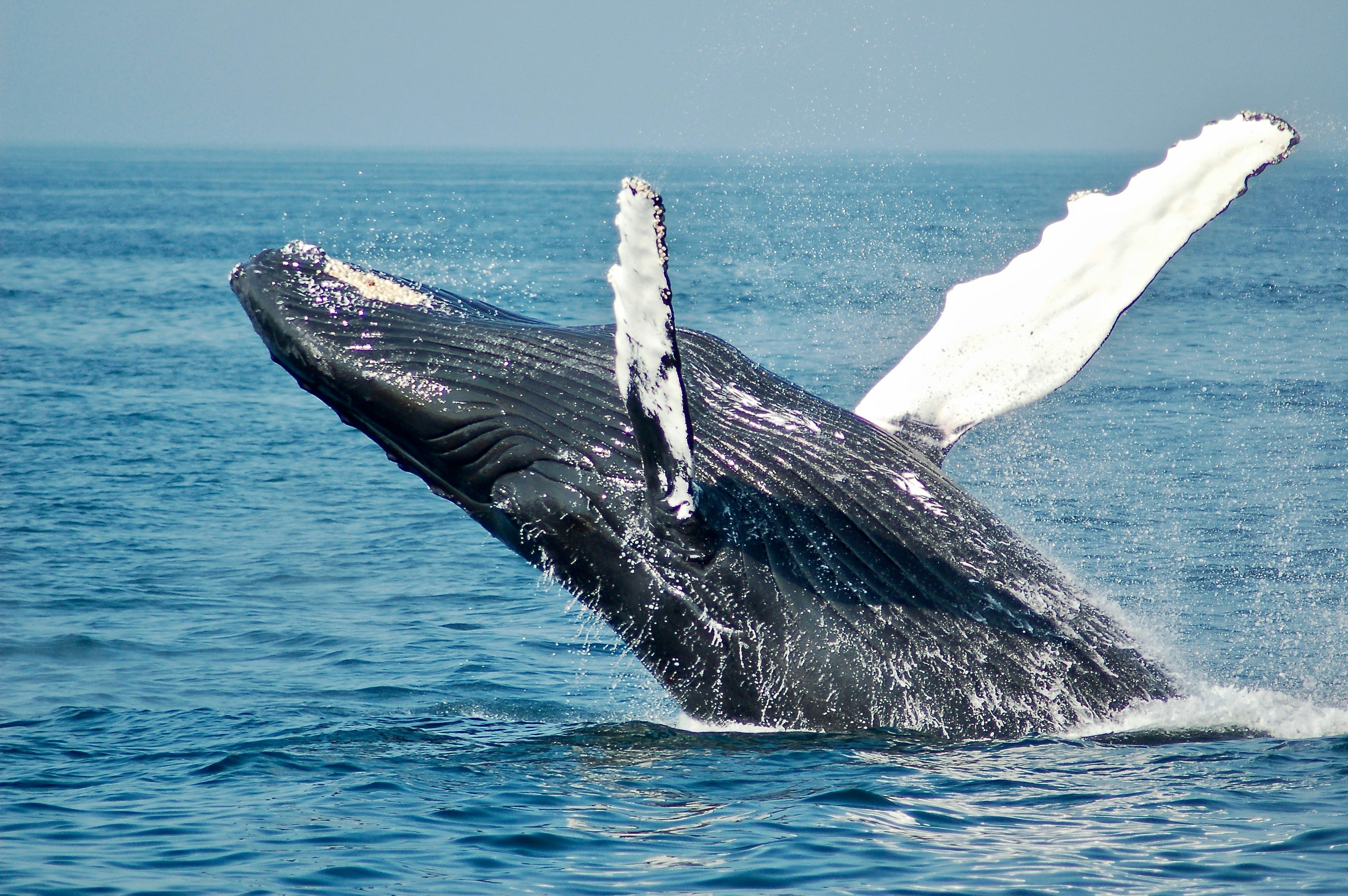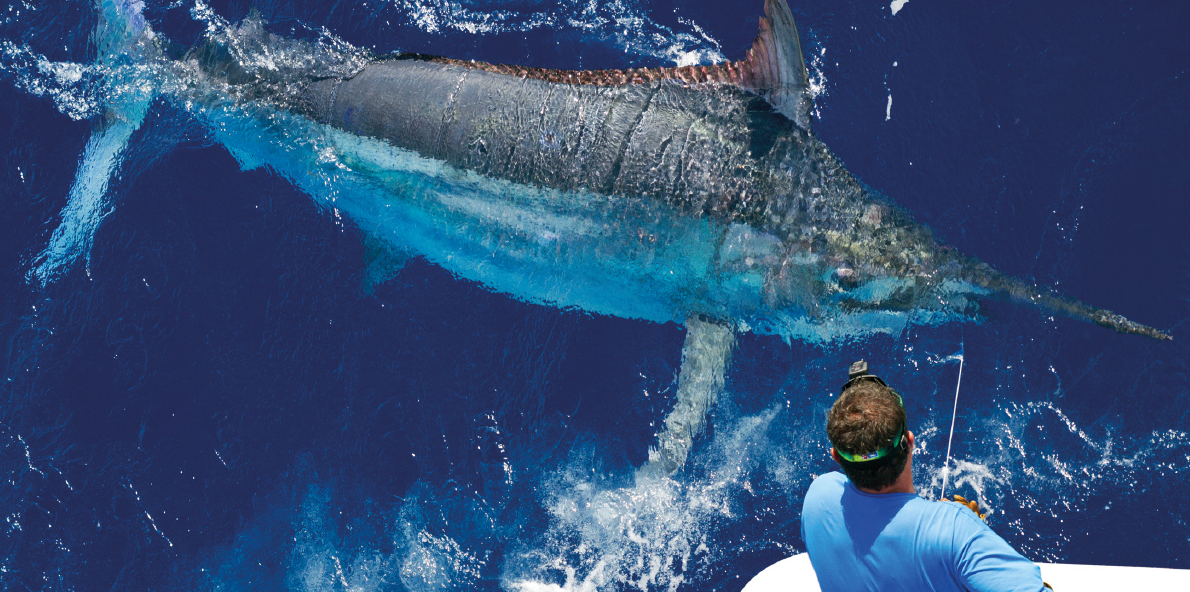A Sportsfishing Revelation Part 2
The Fexas Sportfishing Inverse Relationship Theory
I sat slumped in my chair disillusioned. The discovery of a subculture of puff fishing boats really made me stop and think about the basic principles behind the design of sportfishing boats. I thought about all the places around the world I’ve been to, and of the sportfishing boats, I’d seen there.
Silly Boats
(So How Come They Work?)
San Diego, California, USA. Southern Californians are a strange lot as evidenced by their “sportfishing boats.” Here, some of the strangest sportfishermen of all time are gathered. They just aren’t right for sportfishing as we know it.
Cockpit soles are too high off the water. Freeboards aft are too high. Some don’t have transom doors. Many boats are fitted with transom platforms (something East Coasters wouldn’t be caught dead with.) Some of these boats even have fighting chairs mounted on the foredeck! Can you imagine? Funny bait bags are often dragged astern in the water. Huge live bait tanks that rival the size of the New York Aquarium are fitted below the cockpit. Others have refrigerated fish boxes the size of a stateroom. Cockpits are commonly loaded with projections: here a fixture for a barbecue grill, there a drink holder (remember this is Southern California). We, the smug ones of the East Coast, could laugh at these rather crude vessels except for one fact: They catch big fish there — a lot of big fish.
Rio de Janeiro, Brazil. Here, sportfishing boats are even less sophisticated than Southern Californian boats. The boats are slower and much smaller than those in the U.S., cockpits are cluttered, and sophisticated outriggers and high towers are uncommon.
East Coasters could really be smug here except for one thing: When you go sportfishing in Brazil, if you don’t hook at least ten large billfish a day (that’s one-zero, folks), that day is considered a dismal failure! The record for the greatest number of sailfish caught in one day by one boat is — are you ready smug ones — 37!
Puerto Azul, Venezuela. There is a none-too-sophisticated charter boat here that guarantees a “grand slam” or you get your money back. The guarantee goes something like this: Fish in this boat for one week and you are guaranteed at least four billfish: a blue marlin, a black marlin, a sailfish and a swordfish, or your money back. Try and get that guarantee in Montauk or Fort Lauderdale, guys!
Gold Coast, Australia. The home of more funny fishing boats — many, until recently, big, heavy, slow and old. You guessed it. They catch fish here, too — big time! Australians will boast that any marlin weighing under a thousand pounds is usually turned loose!
Stuart, Florida, USA (touted, by the way, as the “Sailfish Capital of the World”). Back in my office I am trying to assimilate all this into my little mind. State-of-the-art East Coast boats — sportfishing sailboats — funny Californian boats — primitive Brazilian boats — crude Australian boats…
The walls of my office in Stuart are littered with plans for sportfishing boats in the design stage or under construction. They are state-of-the-art fishing machines. Could we be wrong? Is what we are doing overkill? Is there a better way?
The Fexas Theory is Born
All of a sudden, the answer was clear and the “Fexas Sportfishing Inverse Relationship Theory” was born. It was so simple really: THE SOPHISTICATION OF A SPORTFISHERMAN VARIES INVERSELY WITH THE NUMBER OF FISH AVAILABLE. Eureka!
Yes, compared to the U.S. West Coast, Australia, Brazil, and many other fishing hotspots around the world, fishing off the East Coast of the United States is — well, not good. Because of the high population and affluence on the East Coast, we have a situation where we have too many boats hunting for too few fish.
It’s the law of the jungle. The most highly tuned, sophisticated sportfishermen catch the fish — the others are out of luck. Kind of a Darwin’s theory of evolution type thing. Giraffes grew long necks to access leaves high up on trees. Anteaters developed pronounced snouts too seek out ants. And dowdy East Coast cruising boats grew big cockpits, got wider, increased their power and sprouted all kinds of funny antennae, poles, towers, etc... to seek out the elusive big fish.
While all this was going on, of course, man was evolving from a banana eating simian dragging his knuckles on the ground to his present state so he could own a sportfisherman (Sadly, the process is not yet complete and some of us carry heavy callouses on our knuckles, but that is another story.).
In areas where fish are plentiful, a line snagging on a transom door hinge is no big deal. There are plenty more fish out there. On the East Coast, however, this same happening would be a major disaster because that lost fish might be the only hookup for the day — or the month.
You fellows with the million-and-a-half-dollar fishing machines aren’t going to like this much, but the fact is that if fish are plentiful, you can catch them from a bathtub. From a bathtub with a hand line. It’s kind of like digging for gold. If the stuff is plentiful you can get at it by scraping the surface with your hands. If it isn’t, you need very sophisticated equipment to burrow into the earth.
It’s also analogous to a teenager cruising Main Street in his car trying to pick up girls. If there are a lot of girls around, he can get them with a 1947 Plymouth Belvedere in primer with flapping fenders, a leaky muffler, a bad rear end and a cracked windshield. But, when the girls are few and far between, only the guys with Corvettes and Jaguars score.
Yes, it’s sad but true folks. THE REASON WHY EAST COAST FISHING BOATS ARE SUCH HIGHLY TUNES, HIGHLY SOPHISTICATED MACHINES IS — THERE ARE NO DAMN FISH ON THE EAST COAST!
The Tiger and the Whale
On one hand, it makes no sense at all. On the other hand, it is completely logical. Before you pick up that phone or fire off a nasty letter to yours truly, think about it. In support of this premise I refer you to Boating Magazine’s “Ten Best” January issue. One of the “Ten Best” categories was “Ten Best Fishing Holes” and goes on to list Kona, Hawaii; Bay of Islands, New Zealand; Great Barrier Reef, Australia; Nova Scotia; Deep Water Cay, Grand Bahamas; Bahamas East End; Key West, Florida; U.S. Virgin Islands; Grand Cayman Islands; Cabo San Lucas, Mexico and Azores, Portugal.
Please note the only area of the U.S. mentioned is Key West, Florida, which isn’t really part of the U.S. East Coast. While the list is deficient in some areas (no mention of South America hotspots like Brazil and Venezuela, for example), it is an indication of conditions existing around the world.
Yes, the reason why East Coast fishing boats are such highly sophisticated, highly tuned, honed machines is that there are no damn fish on the East Coast. When one thinks about it, inverse relationships such as this abound in nature. The adroitness and cunning of a hunter is inversely proportional to the amount of food available.
Take a whale for example. He lazily “hunts” the oceans of the world with his big mouth open sucking in plankton. Plankton is available in abundance, so his hunting skills are dulled and primitive. Whales are the “fat guys drinking beer and watching football in a La-Z-Boy chair” of the sea world. Compare the whale to a tiger in the jungle where survival is tough and competitive. He has been given sharp eyes, acute hearing, stealth, speed, claws and large teeth. He is rigged to survive!
If it will make you East Coast, zillion-dollar sportfishboat owners happier, you can compare the Australian and Brazilian sportfishermen to the lazy, open-mouthed whale. You are the tigers.
And now these countries (and California) with primitive fishing boats are getting into more sophisticated sportfishermen — not because they’re needed but because of affluence — people can afford them and simply want the best.
If they’ve been successful in the past with their “funny boats,” just think what they can do with a gold-plated, space-age boat! They will be so successful that they will soon overfish their areas, depleting the fish population and thereby making their exotic machines as necessary as they are on the East Coast.
Saving the Marlin
Like the saber tooth tiger, our hunters of the sea could well become extinct if the number and sophistication of sportfishing boats around the world increase and their prey becomes scarce. Someday these magnificent machines could be relegated to “hunting preserve tournaments”, where a section of the ocean would be sealed off and the area stocked with a number of thousand-pound marlin, bred in captivity on a marlin farm specifically for sportfishing purposes (just like the famous fighting bulls of Spain). It’s already happened ashore where hunting preserves are common.
Not a very happy thought is it? What we all can do to help is to release gamefish after they are bested — or use our advanced technology to solve this problem.
THAT’S IT! Folks, here’s another Fexas “get rich quick in the boat business scheme” that is offered at absolutely no charge. MECHANIZED MARLIN. Yes, robot computerized marlin that would be programmed to strike, jump and tire as the fight progresses. Hey, they did it in the movies Jaws, didn’t they?
(Reprinted with permission of Regina Fexas.)
If you would like to read more of Tom's pearls of wisdom, tune in next Friday — "Fexas Friday."
Better yet, why not get a full dose of infectious Fexas whenever you need it — and buy one of the volumes below. Better yet, why not buy all of them — we call them the "Fexas Five." They will provide many evenings of fun reading (better than Netflix), and you'll make the widow Regina very happy knowing that Tom will live on with you the way most of us remember him.
Order 1, 2 or "The Fexas Five" —
To find the "Fexas Five" on Amazon, click here...
Tom Fexas (1941-2006) was one of the most influential yacht designers of the last quarter of the 20th century. With the narrow Wall Street commuters that were built in the 1920s and '30s always on the back of his mind, he wanted to design boats that were at once fast, comfortable, seaworthy and economical to operate. Over the years, he and his firm designed over 1,000 yachts for some of the most prestigious boat builders in the world, including Choey Lee, Palmer Johnson, Grand Banks, Mikelson Yachts, Burger, Abeking & Rasmussen and many others.
Even though toward the end of his career he only designed megayachts and superyachts, including the remarkably influential PJ "Time" in 1987, he is best remembered for his first major vessel in 1978 -- Midnight Lace -- which became a series of 44-52-footers. They were light, narrow, and fast with relatively small engines. He was also influential in the boating community because of the monthly column he wrote for Power and Motoryacht, which began in its very first issue in January 1985.





